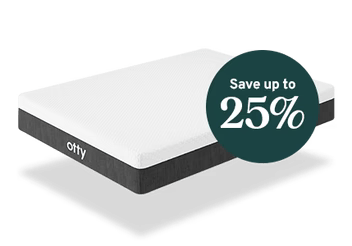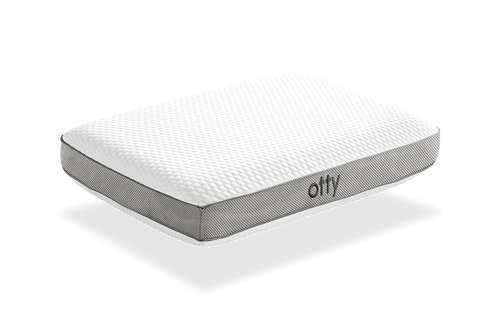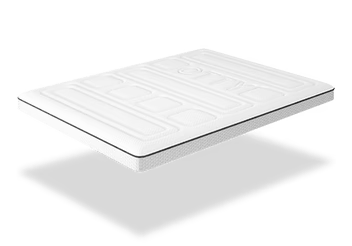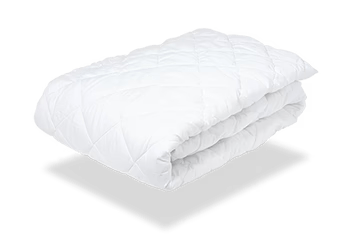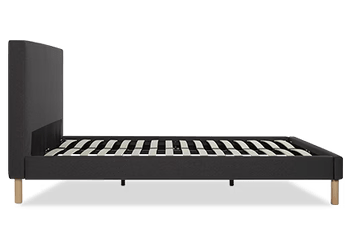
Ever woken up feeling more tired than when you hit the hay?
Or perhaps you've noticed a noticeable dip in your once flat and supportive sleep surface?
You might be dealing with a sagging mattress or body impressions. But how can you tell the difference?
And more importantly, what can you do about it?
What is the Difference Between Mattress Sagging and Body Impressions?
In short:
- Mattress sagging is a permanent depression in the mattress, which can suggest the support structure has deteriorated
- Body impressions are the natural indents left in certain areas by the weight of the body, and should only be temporary
What Causes Mattress Sagging?
One of the main reasons behind mattress sagging is a loss of coil innerspring structure. In other words, with time and use, the springs can lose their shape and support, leading to sagging.
Certain types of mattresses are more prone to this than others, like innerspring and memory foam mattresses. Both these mattress types suffer from sag over time due to the deterioration of their support structures.
How to Identify a Sagging Mattress
Identifying a sagging mattress may seem simple, but there's more to it than meets the eye. It's not just about visual indications of a dip in the middle. You also need to consider the comfort factor and how the bed feels when you sleep on it.
Most commonly, sagging is observed under the heaviest parts of your body, such as your lower back and torso.
As such, if you wake up feeling stiffness or discomfort in these areas, it might be a sign of a sagging mattress.
Sleep disturbances during the night can also hint towards sagging.
If you find yourself constantly shifting positions to find a comfortable spot, there's a good chance your mattress is sagging.
A useful tool in evaluating mattress sag is a straight edge ruler. You can place it diagonally across the mattress and look for any voids under the ruler. If the ruler touches all points of your mattress, your bed is fine. However, if there are gaps where the ruler tilts, it would indicate sagging areas in your mattress.
What are Body Impressions in Mattresses?
Body impressions in a mattress are commonly misunderstood, but very normal features of our everyday sleep systems. Just like the name suggests, a body impression is the indentation that forms over time due to the sleeping body's weight distribution on the mattress.
These impressions are most visible in the areas where we carry most of our weight - through our hips, shoulders, and lower back. A body imoression, shaped by constant interaction with these pressure points, provides a unique map of our sleeping styles on our mattress.
However, these are typically short-lived as they only extend through the plush, comfort layer of the mattress. This means they can easily bounce back once the excessive weight is removed, unlike similar issues such as sagging.
How to Prevent Mattress Sagging and Body Impressions
Regular Mattress Rotation
One of the most effective ways to prevent sagging and body impressions is to rotate your mattress. Doing so at least every 1-3 months can evenly distribute the weight and prevent the formation of sagging spots.
Prioritise Proper Maintenance
Adopting a regular maintenance routine extends the lifespan of your mattress. This includes avoiding jumping on the bed, removing items that add unnecessary weight, and using a mattress cover to protect against spills and wear.
Prevention is better than cure, and taking the time to care for your mattress will undoubtedly elongate its lifespan, creating a comfortable and supportive sleep surface for years to come.
The Role of Mattress Types in Sagging and Body Impressions
The type of mattress you choose can play a significant role in how susceptible it is to sagging and body impressions. Each mattress type, whether it's a foam mattress, memory foam mattress, or a hybrid mattress, has its unique characteristics and response to weight and pressure.
Understanding these differences can help you make an informed decision when choosing a mattress and also guide you in proper mattress maintenance. This knowledge can also help you distinguish between normal body impressions and actual sagging, ensuring you get the most out of your mattress for a comfortable and restful sleep.
How Body Weight Influences Mattress Sagging and Body Impressions
One of the main reasons behind both mattress sagging and body impressions is body weight. It plays a significant role in their formation as mattresses distribute weight based on the person's specific sleep profile.
This causes concentrated areas of pressure on specific points of the mattress, leading to a noticeable dip with regular usage. Areas of excessive weight, like one's torso or hips, often form 'sink spots', which can progress into more drastic sagging or create distinct body impressions over time.
Furthermore, how the body weight is distributed across the surface of the mattress can influence the formation of these issues too. If one consistently sleeps in a particular position or spot, it will cause more sagging or impressions in that area, reducing the comfort and support delivered by the mattress.
Even though these mattress behaviors are largely inevitable, understanding how your body weight impacts their formation can significantly influence your decisions in mattress care, which in turn can lead to more supportive sleep and a longer-lasting restful sleep experience.
Are Body Impressions in a Mattress Normal?
Indeed, body impressions in a mattress are considered normal and to be expected over time. These occurrences are a natural by-product of the mattress complementing your body's curves and providing required support.
This phenomenon occurs more prominently in memory foam or other compliant materials due to the innate response of these materials to pressure and body heat.
Generally, most mattresses will commence developing body impressions within a few weeks post purchase, but it's also dependent on the mattress's firmness. A firm, sturdy mattress will typically resist persistent impressions most effectively.
While sagging is a long-lasting deformity, body impressions are temporary and only affect the plush materials of your bed. Impressions are not typically concerning if they don't exceed 1.5 inches in depth, as they don't hinder your mattress's performance.
Body impressions may leave visible depressions and potentially induce an uneven or slightly uncomfortable sleep surface.
Summary and Key Takeaways
- Mattress sagging is a permanent depression in the mattress, which can suggest the support structure has deteriorated
- Body impressions are the natural indents left in certain areas by the weight of the body, and should only be temporary
